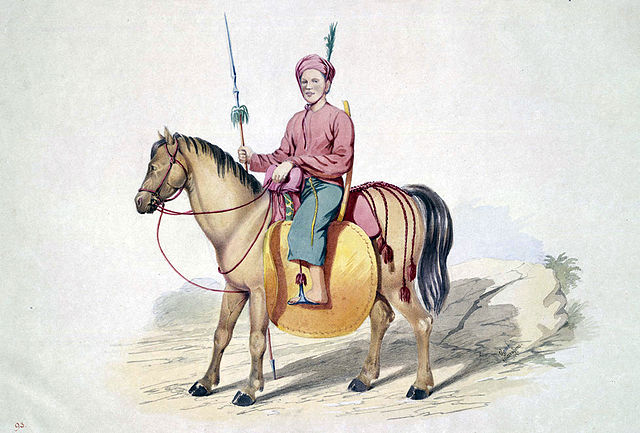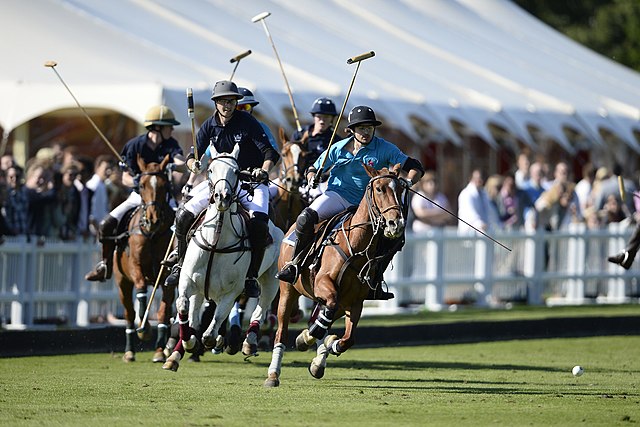The Manipuri Pony is a traditional Indian breed of small horse or pony from Assam and Manipur in north-eastern India. It appears both in the history and the mythology of Manipur, and was used for warfare and polo. It is believed to have been the polo pony in use in Assam in the mid-nineteenth century when British tea planters first saw polo being played, and the height limits set for polo ponies were based on ponies of this breed. It was very numerous in the early twentieth century, but numbers have since fallen. A breed society was established in 1977, and a breed standard was drawn up by the Indigenous Horse Society of India in 2009.
Manipuri pony
Manipuri horseman in an illustration from 1855
Polo is a ball game that is played on horseback, a traditional field sport and one of the world's oldest known team sports. The game is played by two opposing teams with the objective of scoring using a long-handled wooden mallet to hit a small hard ball through the opposing team's goal. Each team has four mounted riders, and the game usually lasts one to two hours, divided into periods called chukkas or chukkers.
Players playing polo
A Persian miniature from the poem Guy-o Chawgân ("the Ball and the Polo-mallet") during the Safavid dynasty of Persia, showing courtiers on horseback playing polo, 1546 CE
Naqsh-e Jahan Square in Isfahan, Iran, is the site of a medieval royal polo field
Statue of polo player in Gilgit, Pakistan






